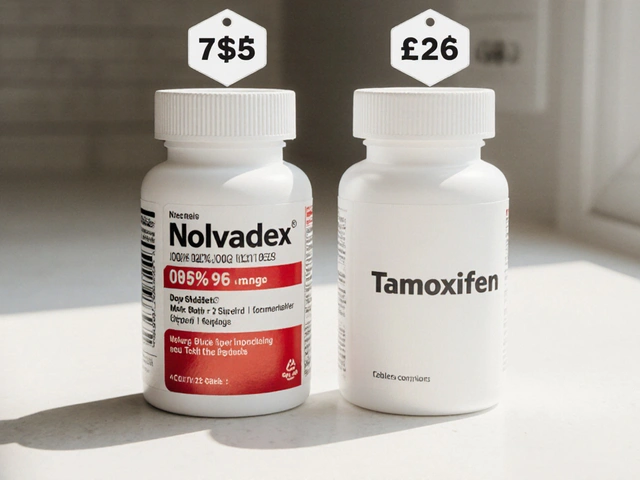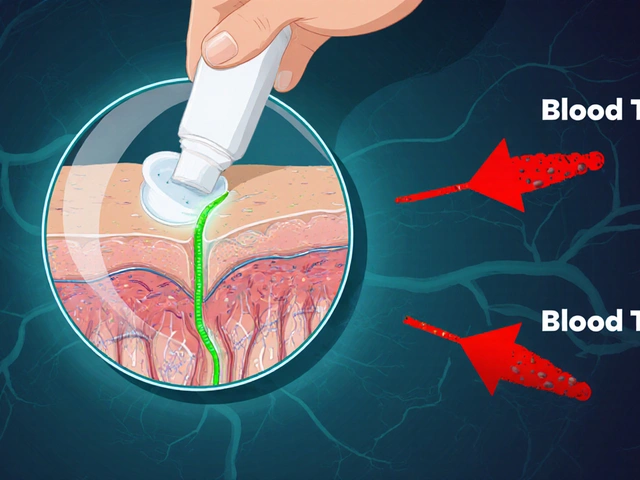 27
Sep,2025
27
Sep,2025
Anthelmintic Selection Guide
Select your scenario below to get personalized drug recommendations.
Albenza is a brand name for albendazole, a broad‑spectrum benzimidazole anthelmintic used to treat a variety of worm infections. It works by binding to parasite tubulin, disrupting microtubule formation and starving the worm of glucose. Health professionals often ask how Albenza stacks up against other medicines like mebendazole or ivermectin. This guide walks through the key differences, helping you decide which drug fits a given clinical picture.
Why a Comparison Matters
Choosing the right anthelmintic isn’t just about killing parasites; it’s also about safety, patient age, drug‑resistance patterns and local availability. In Australia, for example, albendazole is approved by the TGA for neurocysticercosis, echinococcosis and common intestinal helminths, while ivermectin is the go‑to for strongyloidiasis and onchocerciasis. Understanding these nuances can prevent treatment failures and unwanted side effects.
Core Entities and Their Attributes
- Mebendazole another benzimidazole with low systemic absorption, mainly for pinworm, roundworm and whipworm
- Ivermectin a macrocyclic lactone that enhances GABA transmission in invertebrates, effective against strongyloides and onchocerca
- Praziquantel a pyrazinoisoquinoline that increases calcium permeability in trematodes and cestodes, used for schistosomiasis and tapeworms
- Nitazoxanide a thiazolide that interferes with parasite pyruvate:ferredoxin oxidoreductase, active against Giardia, Cryptosporidium and some helminths
- Benzimidazole class a family of drugs (including albendazole and mebendazole) that target β‑tubulin in parasites
- Helminth infection any disease caused by parasitic worms such as nematodes, cestodes or trematodes
- FDA approval regulatory clearance in the United States, indicating safety and efficacy data reviewed by the Food and Drug Administration
Side‑Effect Profiles at a Glance
Adverse reactions differ widely. Albendazole can cause transient liver enzyme elevation, especially with prolonged courses. Mebendazole’s side effects are mostly gastrointestinal and mild because of low systemic exposure. Ivermectin may trigger visual disturbances or hypotension in high doses. Praziquantel often leads to abdominal cramps and headache, while nitazoxanide can cause metallic taste and mild nausea. Understanding these patterns helps tailor therapy for patients with liver disease, pregnancy or pediatric concerns.
Comparison Table
| Attribute | Albendazole (Albenza) | Mebendazole | Ivermectin | Praziquantel | Nitazoxanide |
|---|---|---|---|---|---|
| Spectrum | Broad (nematodes, cestodes, some trematodes) | Primarily intestinal nematodes | Strongyloides, onchocerciasis, ectoparasites | Schistosoma spp., tapeworms | Giardia, Cryptosporidium, occasionally helminths |
| Typical Dose | 400mg BID for 3‑5days (longer for neurocysticercosis) | 100mg BID for 3days | 200µg/kg single dose | 40mg/kg single dose | 500mg BID for 3days |
| Bioavailability | ≈30% (enhanced with fatty meal) | ≈5% (very low systemic exposure) | ≈60% (good oral absorption) | ≈80% (highly absorbed) | ≈50% (moderate) |
| Common Side Effects | Liver enzyme rise, abdominal pain, headache | Nausea, mild rash | Dizziness, pruritus, hypotension | Abdominal cramps, headache, nausea | Metallic taste, nausea, mild diarrhea |
| Pregnancy Category (US) | C (risk cannot be ruled out) | B (generally safe) | B1 (usually safe) | B (safe) | B (safe) |

When to Choose Albendazole Over Alternatives
Albendazole shines in three scenarios:
- Neurocysticercosis - only albendazole (or praziquantel) reaches therapeutic levels in the brain.
- Echinococcosis (hydatid disease) - long‑term albendazole therapy is standard after surgery.
- Mixed infections - its broad spectrum covers hookworm, Ascaris, and certain tapeworms in a single regimen.
If a patient only has a light pinworm infection, mebendazole’s lower systemic exposure makes it the safer bet, especially for children under two. For onchocerciasis‑prone travelers, ivermectin’s microfilaricidal action is unmatched.
Resistance Concerns
Resistance to benzimidazoles is rising in veterinary settings and beginning to appear in human nematodes, notably Ascaris lumbricoides human roundworm with documented β‑tubulin mutations. When treatment failure is suspected, rotating to a drug with a different mechanism-like ivermectin or praziquantel-can restore efficacy. Monitoring local resistance patterns is essential for public‑health programs.
Practical Tips for Clinicians
- Administer albendazole with a fatty meal to boost absorption.
- Check baseline liver function tests for patients needing >7‑day courses.
- Educate patients on the importance of completing the full course, even if symptoms improve early.
- Consider drug‑interaction checks: albendazole induces CYP3A4, which can lower levels of oral contraceptives and certain antiretrovirals.
- For pediatric dosing, use weight‑based calculations; most tablets can be split safely.
Related Concepts and Next Steps
Understanding albendazole’s place in therapy opens doors to broader topics:
- Pharmacokinetics of benzimidazoles - how metabolism affects efficacy against tissue‑encysted parasites.
- Global deworming programs - why single‑dose albendazole is favored for school‑based mass drug administration.
- Drug‑resistance surveillance - tools like PCR‑based detection of β‑tubulin mutations.
- Pregnancy and lactation considerations - balancing maternal health with fetal safety.
Readers interested in the practical rollout of mass deworming might explore "Albendazole dosing strategies for school‑aged children" next.
Frequently Asked Questions
Can I take albendazole with alcohol?
Occasional alcohol won’t change albendazole’s efficacy, but heavy drinking can worsen liver stress. If you have pre‑existing liver disease, avoid alcohol during treatment.
Is albendazole safe for children under 2 years?
The drug is not routinely recommended for infants younger than 12months because safety data are limited. For toddlers 12‑24months, a pediatric dose (10mg/kg) can be used under medical supervision.
How does albendazole differ from mebendazole?
Both are benzimidazoles, but albendazole is better absorbed, penetrates tissues, and is active against extra‑intestinal parasites. Mebendazole stays mostly in the gut, making it safer for short‑term intestinal infections.
What should I do if I miss a dose of Albendazole?
Take the missed dose as soon as you remember, unless it’s almost time for the next dose. Do not double up; completing the full prescribed course is crucial for cure.
Can albendazole be used to treat tapeworm infections?
Yes, albendazole is effective against many cestodes, including Taenia solium (neurocysticercosis) and Hymenolepis nana. However, praziquantel is often preferred for adult tapeworms because of its rapid action.
What lab tests are needed before starting albendazole?
Baseline liver function tests (ALT, AST) are recommended, especially for courses longer than 7days. If the patient is on drugs metabolized by CYP3A4, check for potential interactions.






I’ve been using albendazole in a few community deworming projects, especially in rural areas where access to meds is limited. The drug’s broad spectrum really shines when you have mixed infections, and its absorption improves with a fatty snack. I’ve seen liver enzymes climb a bit on longer courses, so a baseline LFT is a good idea. Just a heads‑up, watch out for typo‑prone dosing charts – they can be defiantly confusing.
The pharmacokinetic profile of albendazole, particularly its enhanced bioavailability with a high‑fat meal, makes it an optimal choice for tissue‑invasive helminths such as neurocysticercosis. Conversely, mebendazole’s low systemic absorption limits its efficacy to luminal parasites, which is why it remains the drug of choice for uncomplicated pinworm infections. I would also note that ivermectin’s mechanism of action differs substantially, targeting GABA receptors in nematodes, which explains its utility against strongyloidiasis and onchocerciasis. :)
Meh, the table is fine.
From a clinical standpoint, the decision matrix outlined in the guide aligns well with current WHO recommendations. For patients with hepatic impairment, preferring mebendazole over albendazole can mitigate the risk of transaminitis. In pediatric cases under two years, the limited safety data on albendazole justifies the more conservative mebendazole regimen. Overall, the guide provides a clear, evidence‑based pathway for drug selection.
Albendazole is a powerhouse in the anthelmintic arsenal. It reaches tissues that other benzimidazoles cannot. This property is essential for treating neurocysticercosis. The drug’s absorption skyrockets when taken with fatty foods. Patients should be advised to eat a snack like yogurt or cheese before dosing. Liver function tests should be checked before starting long courses. A rise in transaminases is common but usually reversible. If enzymes double, consider reducing the dose or switching to mebendazole. The dosing schedule of 400 mg twice daily for three days works for most intestinal worms. For stronger infections like echinococcosis, treatment may extend to weeks. During extended therapy, monitoring is crucial to avoid toxicity. Drug interactions are notable with oral contraceptives due to CYP3A4 induction. Counsel women of child‑bearing age about alternative birth control methods. In children over 12 months, weight‑based dosing ensures safety. Splitting tablets can achieve the correct milligram per kilogram dosage. Ultimately, albendazole’s broad spectrum and tissue penetration make it a first‑line agent in many scenarios.
Honestly, if you’re not checking liver enzymes you’re just asking for trouble, and that’s not cool.
Indeed, the pharmacodynamics of albendazole, as elucidated in recent peer‑reviewed literature, are quite compelling, particularly when one considers the drug’s affinity for β‑tubulin, which, in turn, disrupts microtubule polymerization, thereby starving the parasite of essential nutrients; however, one must also weigh the potential hepatotoxicity, especially in patients with pre‑existing liver conditions, and consequently, regular monitoring becomes indispensable, wouldn’t you agree?
Hey folks albendazole works great but dont forget to take it with a fatty meal its important also make sure kids under 2 dont get it unless doc says so
Yo that table’s lit the colors pop and the facts are on point love the vibe
It’s fascinating how the guide bridges clinical nuance with practical tips 😊. The emphasis on baseline liver panels before prolonged therapy resonates with best practice. I also appreciate the nod to drug‑drug interactions, especially CYP3A4 induction. Overall, a solid resource for both seasoned clinicians and trainees alike.
I agree, the guide hits the sweet spot between thoroughness and readability, making it easy to apply in a busy practice.
Esteemed colleagues, having perused the comparative analysis, I am compelled to acknowledge its methodological rigor, its comprehensive tabulation of pharmacokinetic parameters, and its judicious integration of safety considerations, all of which coalesce to render it an indispensable reference for the discerning practitioner, thereby enhancing our collective capacity to administer optimal anthelmintic therapy.
Wow wow wow this read is like a fireworks show of info, bright and bold, totally pumped to share it with everyone!